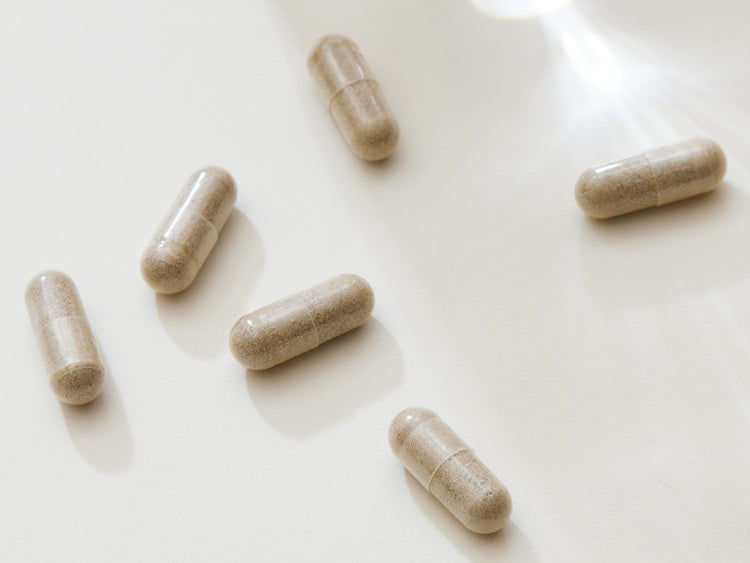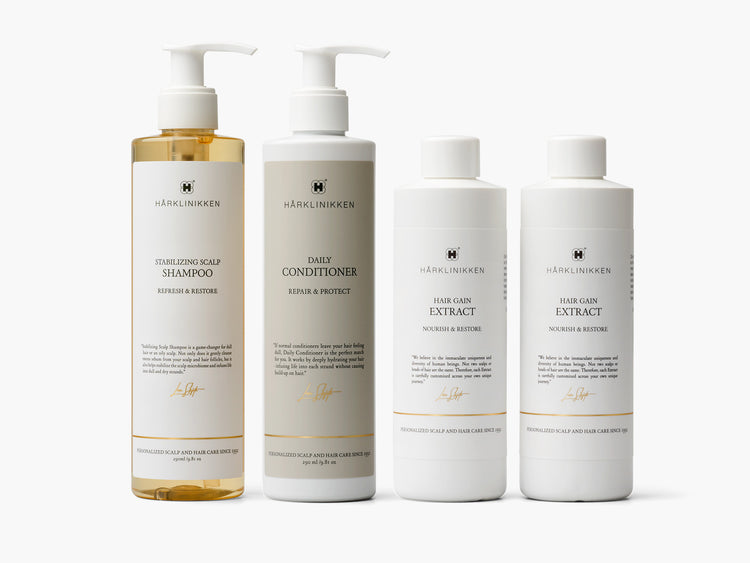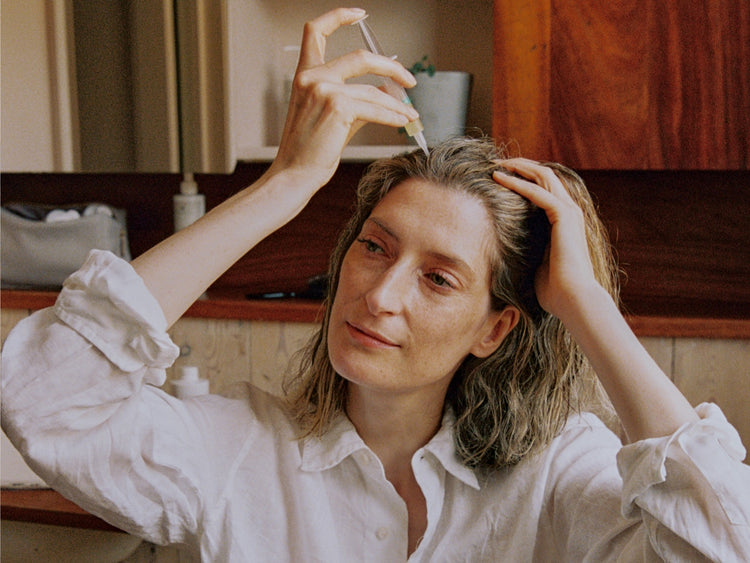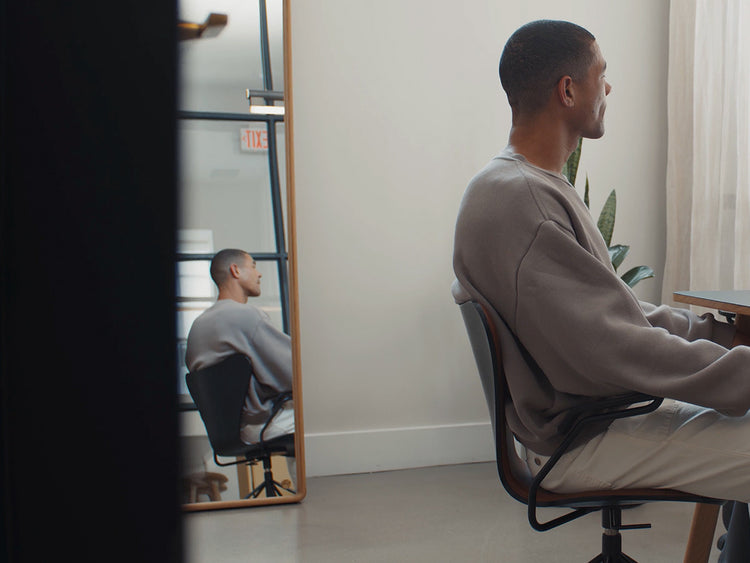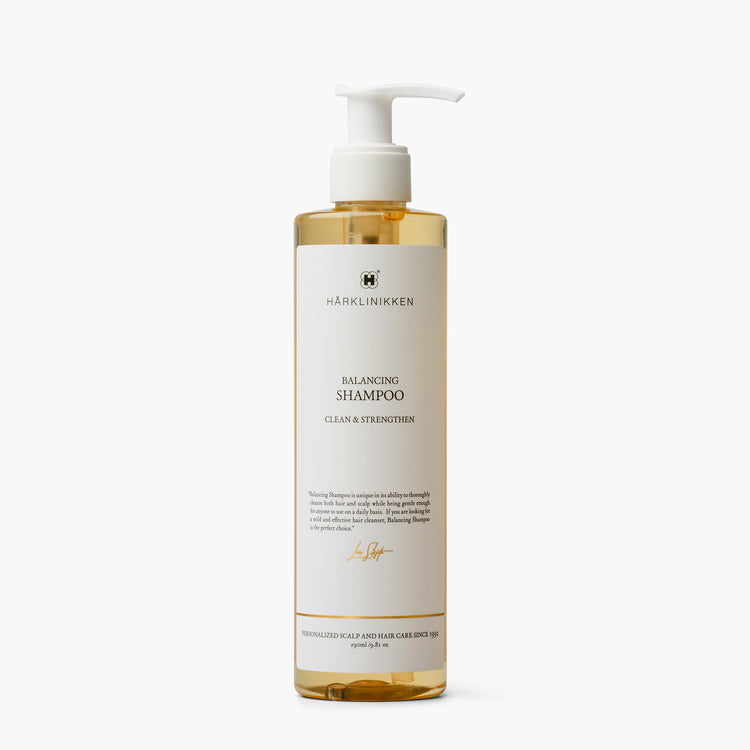From hair thinning to cleansing, conditioning, brushing, drying, styling and beyond, there are countless myths that we have held onto for decades. But many of them are only partially true, a little misguided, or just plain wrong.
Here, we debunk 10 common scalp and hair myths to improve your understanding of hair thinning, scalp health and more.
Myth 1: Less frequent cleansing is better for hair
Healthy hair begins at the scalp. That means cleansing it of potentially damaging buildup (sebum, dead skin cells, product, pollutants, and dirt) that may clog hair follicles and lead to dandruff, irritated scalp, dermatitis, and possibly hair loss. It’s important to balance the scalp’s pH level and create the ideal conditions for healthy scalp health and optimal hair growth by maintaining a robust cleansing routine with the gentle, nourishing and effective shampoos in our cleansing lineup. Read more in our article on the more effective methods for shampooing.
Myth 2: Not all hair types need hydration
All hair types need hydration, albeit in varying intensities. Moisture and hydration are crucial to improve hair’s elasticity and softness, making it less prone to damage, breakage and split ends. If you feel your hair is weighed down, dull or clumpy when you use conditioner or hydrating treatments you are most likely using the wrong products. Our hydration portfolio is made up of formulas that improve the softness, manageability and smoothness of strands without weighing down the hair or the use of silicones or mineral oils.Take a look at our articles on hair types and conditioning for more.
Myth 3: Your hair gets “addicted” or “immune” to certain products
There’s no evidence to suggest your scalp or hair becomes “immune” to certain products, but if you’re not using products that truly work for your hair, it may seem like that’s the case. From our 32 years of experience seeing clients in our clinics all over the world, we know that the more you use Hårklinikken’s unique botanical-based formulas, the healthier and stronger your hair and scalp will feel and look. For some people, consistency is key, but for others making tweaks to their product routine (especially depending on the season) can be quite useful.
Myth 4: Rinsing with cold water makes hair shinier
This isn’t necessarily true, but cool water can help the outer layer of the hair – known as the cuticle – to lie flat, which can make hair appear smoother and shinier. Ultimately, the best way to add shine to your hair is to cleanse well and hydrate with the right products. Cool water can feel soothing for an irritated or inflamed scalp, while too hot water can sometimes increase irritation or strip the scalp of natural oils – leading to dryness. But be mindful that some scalp conditions can react to cold water. If you’re concerned or in doubt, we suggest you visit a dermatologist.
Myth 5: Trims make hair grow faster
Hair grows from the follicle in the scalp, so trims and cuts won’t make your strands grow faster. But split ends can make your hair look stringy, so trimming damaged tresses can make it appear healthier and fuller. Plus, well-hydrated hair breaks less – allowing it to grow longer.
Myth 6: All sulphates are bad for your hair
Not all sulphates are created equally – some are harsh, but others are far milder and sulphate cleansing surfactants can be effective and safe cleansers. The truth is sulphate-free formulas work differently from sulphate-containing shampoos. Like with all scalp and hair products, it’s important to consider the types of ingredients, their concentration, and combinations present on labels rather than solely focusing on the “free-from” list.
Myth 7: Hair loss comes from your mother’s side of the family
Hair loss (also known as androgenetic alopecia) is caused by a combination of genetic and hormonal factors, and it can vary depending on the type and pattern of hair thinning. It’s not only inherited from mother’s side of the family. In fact, research has demonstrated that hair loss is influenced by multiple genes.Some of these genes are located on the X chromosome, which cisgender men inherit from their mothers, and some of which are located on other chromosomes, which they inherit from both parents. So, the mother and father’s sides of the family can contribute to the risk of hair loss in cis men.For cisgender women, the genetic component of hair loss is less understood, but it is also thought to involve multiple genes. The inherited tendency for hair thinning can be exacerbated considerably by hormonal changes experienced during perimenopause, menopause, PCOS and more.
Myth 8: You should brush your hair 100 times per day
Too many brushstrokes or aggressively brushing can cause damage to your hair, scalp, and follicles. It can lead to inflammation of hair follicles due to the repeated pulling from the brush, which can cause permanent damage to the follicles and the hair itself – possibly leading to breakage. Depending on your hair type, raking your fingers through your hair a few times might be enough to detangle, while other people will benefit from a few gentle strokes using our thoughtfully designed Hair Brush.
Myth 9: Plucking greys leads to even more growing back
There’s no evidence to suggest this is true, but we certainly don’t recommend plucking hairs from your head. When you pluck a hair that is thoroughly rooted in the hair follicle and not ready to be shifted, pulling typically leads to at least a minor inflammation in the hair follicle. Doing this over a prolonged period may lead to follicle damage and scarring, which can result in a follicle being unable to grow hair anymore.
Myth 10: Air-drying is healthier for hair
Air-drying is great in the right climate and at the right time of day. But it’s important to remember that hair is at its most fragile when it’s wet and going to sleep with wet hair or leaving it drenched for hours and hours can create the ideal environment for bacteria and fungus thrive. These imbalances can promote various scalp problems including dandruff, yeast overgrowth, dermatitis, or folliculitis. Remember to gently towel-dry thoroughly and if it’s not the right time to fully air-dry your hair, we recommend letting it partially dry on its own before using a blow dryer (applying our Hair Hydrating Crème as a leave-in treatment and heat protectant first) on a low setting.
